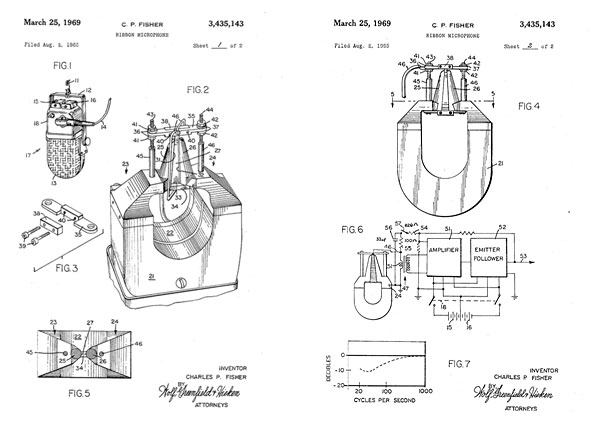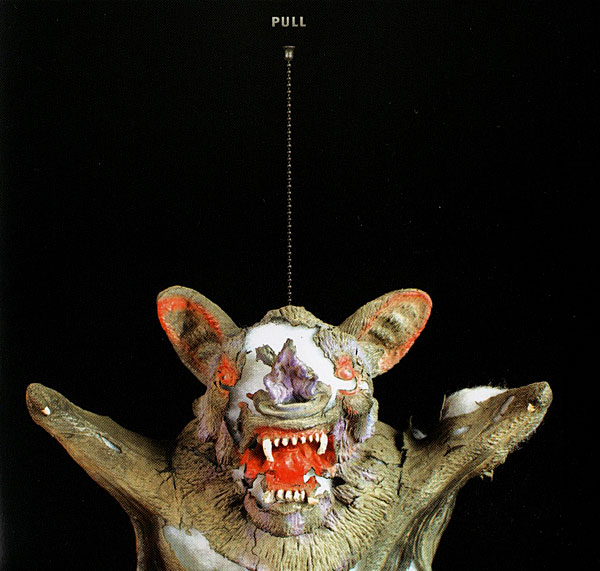| Columns Retired Columns & Blogs |
beginning to know him. Good luck, jm!
Bon voyage,
Sam

Bob Ludwig's recent projects have won eight Grammys in the last three years: in 2013, Album of the Year, for Mumford & Sons' Babel; in 2014, Album of the Year and Best-Engineered Album–Non-Classical, for Daft Punk's Random Access Memories; also in 2014, Record of the Year for the Daft Punk single "Get Lucky," and Historical Album of the Year for the Rolling Stones' Charlie Is My Darling: Ireland 1965; and in 2015, Album of the Year and Best-Engineered Album–Non-Classical, for Beck's Morning Phase, as well as Best Surround-Sound Album, for Beyoncé's Beyoncé.
I met Bob in 1991, when he took me on as a new client, to remaster the recording, for John Marks Records, of Arturo Delmoni's Songs My Mother Taught Me LP. Bob didn't know me from Adam, but legendary recording engineer David Hancock, who had recorded Songs, had asked him to do me a favor.
Hancock was an idiosyncratic iconoclast. He had no use for Dolby noise reduction, and little for condenser microphones. His go-to mikes were Charles Fisher's Cambridge C35 ribbons (US Patent 3,435,143), most famously used by Hancock in Donald Johanos and the Dallas Symphony's 1967 recording of Rachmaninoff's Symphonic Dances, among the most frequently remastered and reissued of all audiophile orchestral recordings.

Hancock devised his own steady-state, asymmetrical system of noise reduction for recording and playing analog tape, which the liner notes for the original Vox LP of Symphonic Dances described as "a specially developed constant-velocity recording curve...for improved signal-to-noise ratio." I have no idea what that means (footnote 1).
When, in 1982, Hancock recorded Songs My Mother Taught Me, he was using a beautiful new Studer A80—a 30ips, ½", two-track analog tape recorder. Problem was, proper playback of David's master tapes required a nonstandard equalization curve. Bob Ludwig was one of the few engineers—if not the only one—to have the proper calibration tape, which is used to ensure correct level and equalization prior to mastering. (I've always thought that both the North Star LP release of Songs My Mother Taught Me and Mobile Fidelity Sound Lab's CD release were not quite right: Both struck me as veiled—in detail, dynamics, and high frequencies.)
Listening to the master tapes of Songs My Mother Taught Me played through Ludwig's Duntech Sovereign 2001 speakers while watching him manually adjust the groove spacing was a heady experience for me, as it would have been for any audiophile. (Bob enjoyed the music, too; he thinks Arturo is a gifted artist.) Bob and I then worked together on a dozen or so other JMR projects.
I asked Bob to answer some questions, not because of his recent hot streak at the Grammys, but because of his broad musical training and knowledge, and his eminent position in an industry undergoing radical transformation. Bob's education included training as a trumpeter (he was first chair in a professional orchestra), a music teacher, and a music librarian.
John Marks: In interviews about his work as the host of the New York Philharmonic's radio and Internet broadcasts, Alec Baldwin has said he thinks there's an age cutoff for being able to embrace the worldview of Gustav Mahler's great works. Baldwin thinks that most young people haven't gotten over enough of life's setbacks and disappointments for Mahler to make sense to them.
You recently told me that hearing tenor Jonas Kaufmann's performance in the title role of Wagner's Parsifal at the Metropolitan Opera transfixed you and your daughter. You e-mailed, to me and others, "Parsifal, if any of you don't know it, is one of the supreme achievements by a human; Mahler spoke of measuring his life as 'before Parsifal, and after Parsifal.'"
Do you think there's an age cutoff for entering the world of Parsifal?
Bob Ludwig: I don't think there is an age cutoff for any music. However, people have different temperaments and formative experiences. Any high school student can read the words that make up Huckleberry Finn or The Great Gatsby, but I think you need some adult experiences before great art can have its full impact. But the fact that I basically agree with Alec Baldwin does not mean I think that a high-school or college-age person won't get quite a lot out of Parsifal, or Mahler.
I think more important than Mr. Baldwin's "age cutoff" is the need for music education. While it is possible for anyone to be immediately attracted to it, it's doubtful that a musically uneducated person would discover the mind-bending glories of an 80-minute raga, let alone something like Morton Feldman's String Quartet 2 (five to six hours long), which I hold as one of my supreme concert-music experiences.
JM: You're right—but young people do sit through very long movie adaptations of J.R.R. Tolkien's works, and they read very long novels that come out in multivolume series—Harry Potter, The Twilight Saga vampire books, The Hunger Games, etc. So I think the challenges that high culture faces today aren't simply a matter of attention span.
I don't despair about the future of high culture. However, in my work as a library volunteer, I recently chatted with a young man who had no idea who Louis Armstrong was (an Armstrong CD was playing in the library's boom box), and thus no idea why Armstrong was culturally important. That tells me that some very important balls are being dropped. What is the future of musical cultural literacy in America?
BL: One of my degrees is in music education, so hearing that any American is unaware of the genius and importance of Louis Armstrong makes me sad. Armstrong is the wellspring of America's own music, jazz. I think it is important that all the diverse people who make up a nation should hold a cultural legacy as a common inheritance. As music lovers, I think it is important to try to share our enthusiasm with others to help prod their own musical interests.
JM: I was really taken aback by " www.tinyurl.com/shazameffect>The Shazam Effect," an article by Derek Thompson in the December 2014 issue of The Atlantic Monthly. Thompson pointed out that Shazam [a smartphone app used to sample and identify unfamiliar recordings] does a lot more than provide song titles to its users. Shazam also harvests data about where you heard the song, and so on. The article linked that two-way exchange of data to the narrowing of musical styles: Now that the music business has unprecedented information about what people like, it wants to deliver more of the same.
The irony is that today's technology can deliver nearly unlimited variety, but what people ask for is increasingly—and unprecedentedly—similar. Recent research indicates that 77% of the total revenue from sales of recorded music goes to the top 1% of artists and bands. Further, today's 10 best-selling tracks have 82% more market share than did the Top 10 singles of 10 years ago.
A massive study by the Spanish National Research Council concluded that, compared to decades going back to the 1950s, the music of the decade just ended exhibited the smallest variety of pitch transitions within songs. Does that sound about right to you?
BL: The music industry has always been supported by "the 1%," and just like other popular culture (movies and books), when someone has a hit, everyone else wants to sell the same thing!
A decade ago, when people were forced to buy albums by the record companies, at least they were also exposed to other tracks where a band "stretched out" and explored the boundaries of their genre. Now, when people only purchase or are exposed to the "hit singles," they never hear anything but the same old formula, over and over again, and they love it because it is so familiar—which is all fine.
JM: When I first worked with you, in 1991 in New York City, your monitoring loudspeakers were Duntech's Sovereign 2001s. You took those with you when you relocated to Portland, Maine. You kept them for a while, until you replaced them with EgglestonWorks Ivys. Have you ever been tempted to replace the Ivys?
BL: I haven't yet heard anything I prefer, so: "No." The Ivys I have carry serial numbers 1 and 2. They were developed by William Eggleston III. The loudspeakers' crossovers were custom tweaked in my studio, and William put a special dope on the midrange drivers while he was here. My set still has the full complement of 23 drivers per side he originally specified. I drive the Ivys with Cello Performance II amplifiers. Those can deliver 3200W into 2 ohms with double [their normal] slew rate, as they are a bridged set.
The "marriage, with no chance of divorce" is between the monitoring speakers and the control room. My room was conceptually designed by Dr. Peter D'Antonio, of RPG Diffusor Systems. Peter is a Fellow of the Acoustical Society of America. The shape of the large, 30' by 23' by 20'-high room was based on Louden ratios, for the fewest room-node issues.
I greatly admire the large Wilson Audio and Rockport Technologies loudspeakers, but I still feel my Ivys best meet my personal needs.
JM: For three years in a row, a project of yours has received a Grammy for Album of the Year. However, what I'd like you to do is to list a few of the projects you remember most fondly that, for one reason or another, did not win Album of the Year. As an example, I think that Elvis Costello's All This Useless Beauty (1996; CD, Warner Bros. 46198-2) is some of his finest work. I also think the album's production values, which change from song to song, are a great example of the engineering's really being part of the musical art.
BL: All This Useless Beauty is a perfect example. Geoff Emerick (the Beatles' engineer) did such a great job on it that it was all I could do to keep out of his way and make the best transfer I could. We have seven different kinds of tape-machine playback electronics at the studio, and not one of them sounds exactly like any other. So that was a case of merely choosing the best electronics, and that was the "mastering."

Captain Beefheart's Shiny Beast (Bat Chain Puller) [CD, VAULTernative VR2012-1] is an acquired taste, but once I am immersed in it, I never want to hear anything else. My 40th-anniversary (2014) remastering of Elton John's Goodbye Yellow Brick Road [2 CDs, Island Mercury 3758589] is very fresh sounding. It's so hard to pick a few, but: the ABKCO Stones catalog, all the Queen remasters, and all of Bruce Springsteen's work. Others: Esto Es Vida, by Draco Rosa [CD, Sony Music Latin 378988]; The Whole Love, by Wilco [CD, Anti- 87174]; Sound & Color, by Alabama Shakes [CD, ATO 226725]; Bass & Mandolin, by Chris Thile & Edgar Meyer [CD, Nonesuch 544735]; Blunderbuss, by Jack White [CD, Third Man 95993]; and The Civil Wars, by The Civil Wars [CD, Sensibility 88883738502].
Lots of great music didn't win "Album of the Year"!!!

beginning to know him. Good luck, jm!
Bon voyage,
Sam

I am currently listening to Radio Rewrite based on his recommendation. Very cool.
